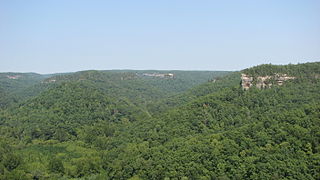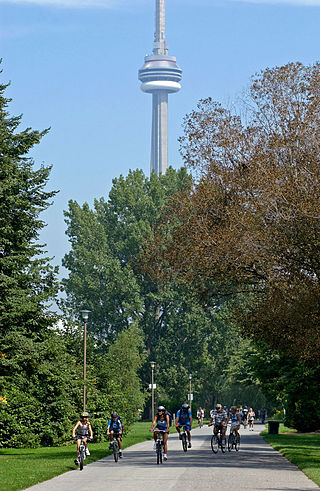The Perkins Arboretum is the Colby College arboretum, located at 5600 Mayflower Hill Drive in Waterville, Maine, United States. It is used for teaching and research, but its trails are also open to the public.

Klehm Arboretum & Botanic Garden is a nonprofit arboretum and botanical garden located at 2715 South Main Street, Rockford, Illinois.

Nichols Arboretum, locally known as the Arb, is an arboretum operated by the Matthaei Botanical Gardens and Nichols Arboretum (MBGNA) at the University of Michigan. Located on the eastern edge of its Central Campus at 1610 Washington Heights in Ann Arbor, Michigan, the Arboretum is a mosaic of University and City properties operated as one unit. The arboretum is open daily from sunrise to sunset with no charge for admission. The Huron River separates a northern section of the arboretum's floodplain woods; the railroad marks the northern border.

Daniel Boone Native Gardens, located in Boone, North Carolina, United States, has a collection of North Carolina native plants in an informal landscaped design. The gardens are open daily from May to October.

The Appalachian mixed mesophytic forests is an ecoregion of the temperate broadleaf and mixed forests biome, as defined by the World Wildlife Fund. It consists of mesophytic plants west of the Appalachian Mountains in the Southeastern United States.

The Appalachian–Blue Ridge forests are an ecoregion in the Temperate broadleaf and mixed forests Biome, in the Eastern United States. The ecoregion is located in the central and southern Appalachian Mountains, including the Ridge-and-Valley Appalachians and the Blue Ridge Mountains. It covers an area of about 61,500 square miles (159,000 km2) in: northeast Alabama and Georgia, northwest South Carolina, eastern Tennessee, western North Carolina, Virginia, Maryland, and central West Virginia and Pennsylvania; and small extensions into Kentucky, New Jersey, and New York.
Regional floras typically contain complete dichotomous keys for identification of trees and other plants to species. The following guide originates from Our Native Trees and How to Identify Them by Harriet L. Keeler and applies to some flowering trees which are indigenous to the region extending from the Atlantic Ocean to the Rocky Mountains and from Canada to the northern boundaries of the southern states, together with a few well-known and naturalized foreign trees. This guide excludes conifers and is not an exhaustive list of all trees known to occur in the region.

In the central and southern Appalachian Mountains of Eastern North America, a cove is a small valley between two ridge lines that is closed at one or both ends.

Native trees in Toronto are trees that are naturally growing in Toronto and were not later introduced by humans. The area that presently comprise Toronto is a part of the Carolinian forest, although agricultural and urban developments destroyed significant portions of that life zone. In addition, many of Toronto's native trees have been displaced by non-native plants and trees introduced by settlers from Europe and Asia from the 18th century to the present. Most of the native trees are found in the Toronto ravine system, parks, and along the Toronto waterway system.

The Ecological regions of Quebec are regions with specific types of vegetation and climates as defined by the Quebec Ministry of Forests, Wildlife and Parks. Given the size of this huge province, there is wide variation from the temperate deciduous forests of the southwest to the arctic tundra of the extreme north.







